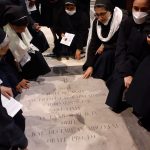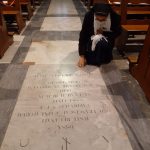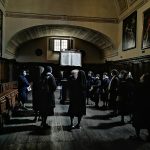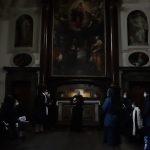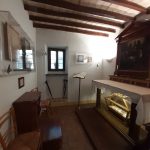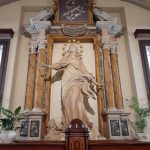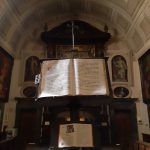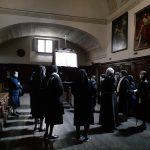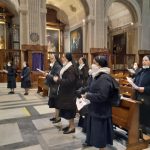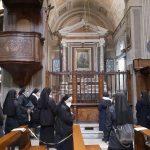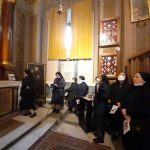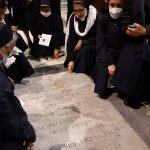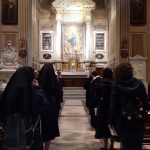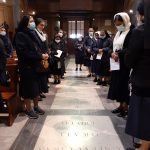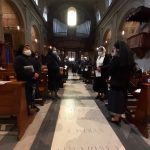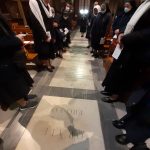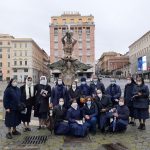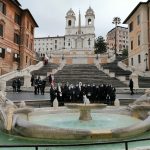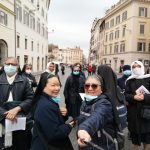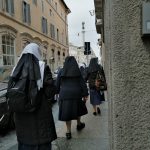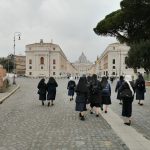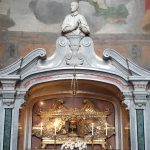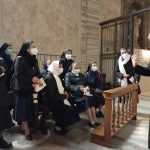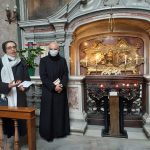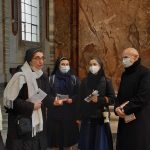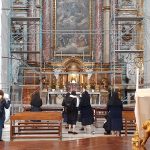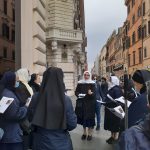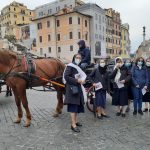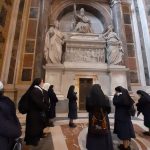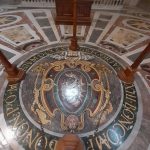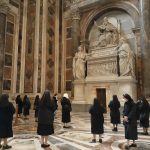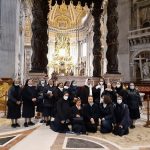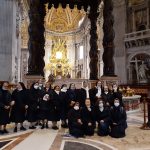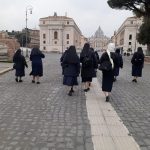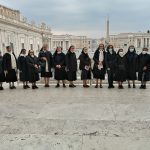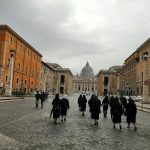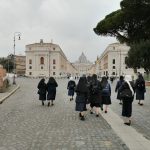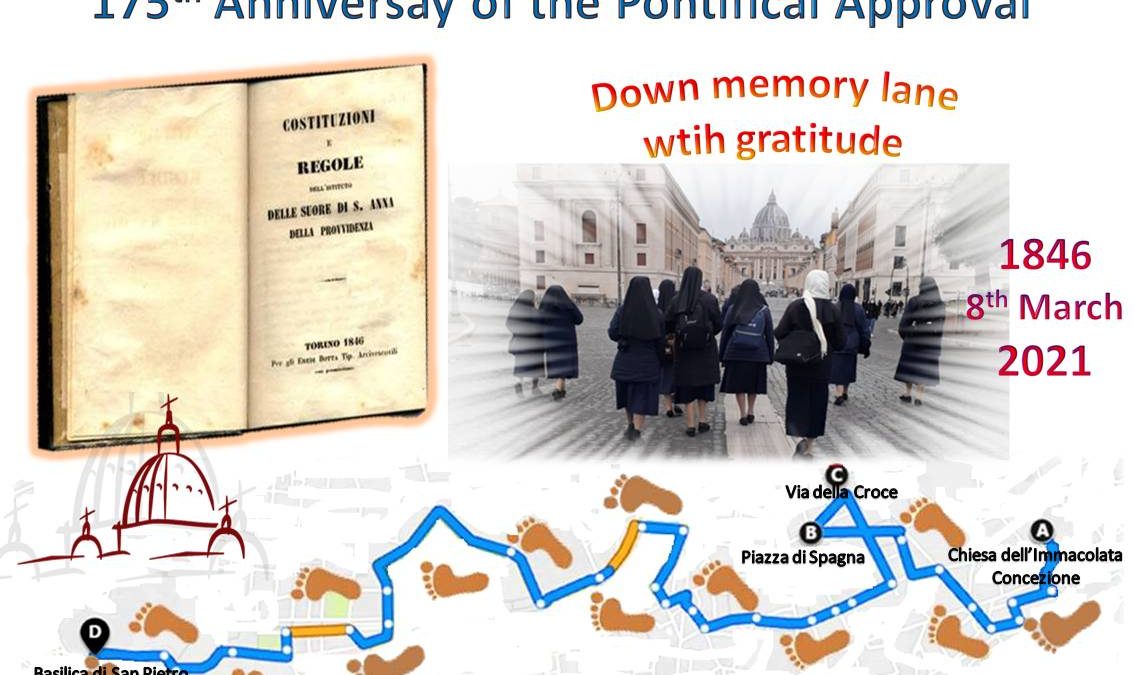
DOWN MEMORY LANE WITH GRATITUDE
To celebrate the 175th Anniversary of the Approval of our Institute and the Constitutions, on behalf of the whole Congregation, a pilgrimage was organized, in the footsteps of our Foundress. Mother, the General Councillors and some Sisters of the three Communities of Rome, spiritually took with them all the Sisters of the Congregation, the Formees and the members of the LASA Groups.
The route began from the CHURCH OF THE IMMACULATE CONCEPTION, where the remains of Father Giusto da Camerino rest. An essential stop in PIAZZA DI SPAGNA and VIA DELLA CROCE, where the Marchioness Giulia sojourned during the months of her stay in Rome, then they proceeded on foot till ST. PETER’S BASILICA to pray at the Tomb of POPE GREGORY XVI who approved the Institute.
The Walking Pilgrimage was marked by prayer and reflection on passages from our Sources relating to the various stages.

| CHURCH OF THE IMMACULATE CONCEPTION | |
 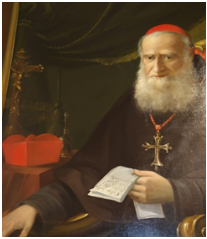 |
In front of the place where the remains of Father Giusto da Camerino rest.
He was Consultor of the Congregation of Bishops and Regulars, which, at that time, had been put in-charge by the Holy See, of the study of the new Religious Institutes and Constitutions in view of their approval. This is how Father Giusto da Camerino expressed himself with regard to our Constitutions: “…It seems to the undersigned that the present Rules are totally in conformity with the Doctrine and Discipline of the Church, well indicated to lead the Religious on the path of Christian Perfection, and to reach the main purpose of their vocation in order to educate girls especially the poor class. A spirit of prudence and discretion can be seen in these Regulations, to favour that peace, harmony and fraternal charity reign among the Sisters. Sufficient precautions are found there to prevent the dissipation of their spirit in the midst of distracting occupations; and to keep far away from the Sisters the contagion of the bad example of the world, and that they are not attacked by the worldly dust. Therefore, this writer is of the opinion that the present Rules, after the necessary modifications, could be approved by the Holy See” (Consultation for a particular Congregation – Rome December 1845). |
ROUTE TILL PIAZZA DI SPAGNA
from the Church of the Immaculate Conception
to the obelisk with the statue of the Immaculate Conception
This is how same Father Giusto da Camerino exhorted us, once our Institute and the Constitutions were approved: “… Thus may the characteristic virtues of the Sisters of St. Ann be, sweetness, pleasantness and evangelical simplicity, in order to make their ministry loved. This word ‘Ministry’ might seem too strong for simple women; but it could also be adapted in a certain sense; because they have to combine a special apostolate to the duties of maternity towards the souls of their students. And in as much as the love of God is more sublime than natural love, so also should their zeal be more perfect for the poor daughters entrusted to their care.”
“I know that to reach such a blessed end easily you need many graces, which you should ask for incessantly from Jesus Christ. But you know very well how much the intercession of the Mother of God is needed to obtain them abundantly. I exhort you therefore to grow more and more in devotion to Mary Most Holy, procuring also to instil it in the hearts of the tender young girls entrusted to your care. I conclude assuring you that as long as I am alive, I will never cease through my humble prayers to recommend your holy Institute to Our Lady, so that with her valid patronage the Sisters of St. Ann may always grow in the richness of grace and virtue and grow also in number to be able to multiply houses and establishments in many other Dioceses”.
RUOTE TO VIA DELLA CROCE
Some excerpts from Silvio Pellico’s narration about that journey of the Marchioness Giulia: “Since the necessary trial period of some years for the Institutes of the Sisters of St. Ann and of the Magdalenes was completed, she [the Marchioness] considered it was now time to go to Rome to make them known to the Holy See and to ask for Pontifical approval. She discussed this opinion with the Archbishop, he deemed it good, and the pious Foundress got ready for the journey. She was not dismayed to learn that such solemn approvals were very difficult to obtain, and that recently the Holy See had refused it to some respectable Congregations, existing for many years…
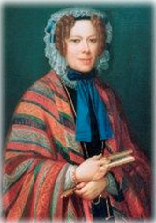 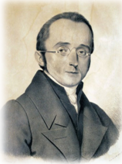 |
[…] When the Marchioness of Barolo arrived [in Rome], she rented a beautiful two-storied house, along with the ground floor, in Via della Croce near Piazza di Spagna; I said goodbye to my Reverend hosts [the Jesuits], and came to stay with my benefactress. Cardinal Lambruschini was known to her, she had seen him in Paris when he held the office of Apostolic Nuncio in that capital. Now for several years Gregory XVI had entrusted him with the greatest responsibility of all, that of Secretary of State. The Marchioness went to introduce herself to the Cardinal, to explain to him the reason for her coming, and the venerable old man welcomed her with the most particular honours and with paternal affection, neither did these demonstrations diminish later on. The merit of the petitioner was clear to him and he was able to discern and evaluate that of the Institutes in question. However, he declared that the obstacles were great, and that it was difficult that they would be overcome in the circumstances that prevailed. He was soon prompt to come and pay a visit to the Marchioness, and he told her that he had spoken with earnestness to the Holy Father, and found him full of esteem for her and for her works; but the obstacles foreseen were really many and it would perhaps take a long time to get through them. She, not desiring anything but the fulfillment of the divine will, did not however feel disheartened and considered it her duty to persist in taking the appropriate steps to bring to completion the issue. All the other Cardinals whom she visited and consulted gave her the best welcome, none however concealed the serious impediments that were arising towards the good outcome of her request. |
OUTSIDE THE PORCH OF ST. PETER’S BASILICA
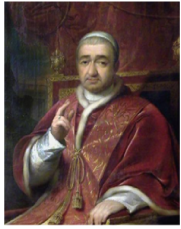 |
Decree of Approval of the Institute The Supreme Pontiff, His Holiness Pope Gregory XVI, having examined carefully the letter of recommendation of Most Rev. Archbishop of Turin, and having heard some Rev. Cardinals, delegates of the Sacred Congregation for Bishops and Regulars, has approved and confirmed the Institute of the Sisters of St. Ann founded in the year 1834, in the Diocese of Turin, by the most pious Marchioness Falletti of Barolo, belonging to the Colbert family, and their Rules and Constitutions as contained in the copy mentioned above. In order that the Sisters referred to may strive actively towards the established goal and with the passing of time may bring forth more abundant fruits, he extends to them by special grace all the indulgences which the Sisters of the Society of the Sacred Heart of Jesus, enjoy by the indults of the Apostolic See; observing the form and tenor of the same indults. His Holiness grants his consent so that the present Decree be drawn up as an Apostolic Letter in the form of a Brief. Granted at Rome by the Sacred Congregation for Bishops and Regulars, on 8th March 1846. Carlo Ostini Prefect |
|
“Brief” of Pontifical Approval of the Institute and its Rules IN THE PERPETUAL MEMORY OF THE FACT. […] Therefore among the works of Christian charity those comprising of the education of little boys and little girls, especially of the poorest classes deserves special praise as they are so much exposed to falling into vices due to the lack of education. The Society of the Sisters of St. Ann should be numbered among these eminent works of Christian charity that the beloved daughter in Jesus Christ Marchioness Giulia Falletti of Barolo of the Colbert family, laudable for her outstanding faith, virtue and generosity, had already established in Turin right from the year 1834, with illustrious example of charity, at her own expense. This Society has as its aim the education of little children of humble conditions, in piety and in every type of work convenient to their state, and to give themselves for any service of charity to which they may be called. We, who are placed in the most high apostolate by the inscrutable will of God, with no merit of our own, we have at heart that children at that early age be kept away from the seduction of vices and be motivated to virtue. We commend the thoughts and actions of the most pious lady Foundress of this work and strongly exhort the Sisters of this Institute to persevere courageously in the hard work begun, striving to enkindle love for piety and for virtue in the young students. […] Sustained therefore by sure hope that with the help of divine grace this society will produce abundant fruits, for the desire we have to bestow with particular beneficence all the persons considered in this document, […] we approve and confirm with our apostolic authority the Institute of the Sisters of St. Ann and their Constitutions and Rules, […] and we command that these be observed by all the Sisters of the Institute. […] Given in Rome at St. Peter’s, under the seal of the Fisherman, on the 3rd day of April 1846, the 16th year of our Pontificate. CARD. LAMBRUSCHINI |
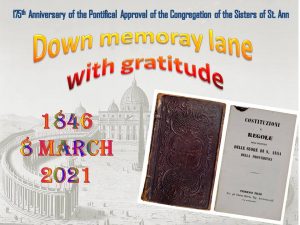  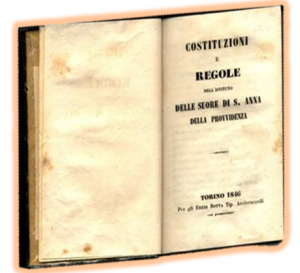  |
 |
Pilgrimage Booklet |









